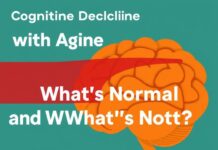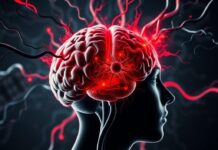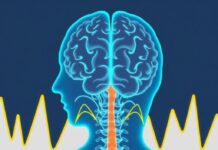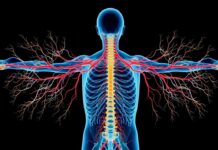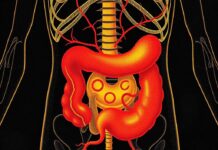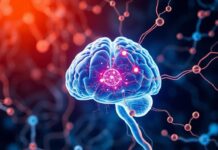The idea that a morning coffee jump-starts your day while an evening drink helps you unwind is familiar to many of us. But beneath those familiar rituals, two very different chemicals — caffeine and alcohol — are working on the tiny machines that run our thoughts, emotions, and behavior: neurons. In this article we’ll take a clear, friendly, and thorough walk through what neurons are, how caffeine and alcohol act on them at the cellular level, how those actions translate into the experiences you know (alertness, relaxation, clumsiness, mood changes), and what happens when use becomes chronic. Along the way I’ll point out common myths, practical advice, and what scientists still don’t fully understand. This is not a lecture; it’s a conversation about how two of the most widely used psychoactive substances shape the most important cells in your body.
Содержание
Meet the Neuron: The Tiny Powerhouses of Thought
Before we compare caffeine and alcohol, it helps to know the basics of their target. Neurons are specialized cells that communicate using electrical pulses (action potentials) and chemical messengers (neurotransmitters). Each neuron has a cell body (soma), branching dendrites that receive inputs, and a long axon that sends signals to other cells. At the end of the axon are synapses, tiny gaps where neurotransmitters hop across to influence the next neuron.
Neurons are always balancing excitation and inhibition. Excitatory signals (for example, glutamate-mediated) make a neuron more likely to fire an action potential. Inhibitory signals (for example, GABA-mediated) make firing less likely. This balance underlies everything from learning and memory to mood and motor control. When substances change the balance — by blocking a receptor, enhancing a messenger, or altering membrane properties — they change how networks of neurons behave and thus how we think, feel, and act.
Key concepts to remember about neuronal signaling
Neuronal communication is electrochemical: ions crossing membranes create electrical changes, while neurotransmitters and receptors carry chemical messages. Receptors are proteins on neurons that translate chemical signals into cellular responses. Some receptors increase activity (excitatory), some decrease it (inhibitory). Plasticity — the brain’s ability to change how strongly neurons connect — is central to learning and can be affected by substances that change neuronal firing patterns.
How Caffeine Acts on Neurons
Caffeine is a stimulant found in coffee, tea, yerba mate, chocolate, many sodas, and energy drinks. Most people know it wakes you up; here’s what happens inside neurons when you drink it.
Primary mechanism: Adenosine receptor antagonism
Caffeine works mainly by blocking adenosine receptors (A1 and A2A) in the brain. Adenosine is a naturally occurring molecule that builds up during wakefulness and signals the brain to slow down — promoting sleepiness and reducing arousal. By sitting in adenosine receptors without activating them, caffeine prevents adenosine from doing its job. The result is increased neuronal firing and release of various neurotransmitters, which feels like greater alertness and reduced fatigue.
Ripple effects on other systems
When caffeine blocks adenosine’s calming influence, other systems respond. For example, caffeine can indirectly increase dopamine signaling in some brain regions, which contributes to improved mood and motivation. It can also boost release of norepinephrine and glutamate, enhancing attention and cognitive speed. Because adenosine receptors modulate cerebral blood flow, caffeine can also change blood vessel tone in the brain, which sometimes explains how it relieves certain headaches.
Short-term effects you might notice
- Increased alertness and reaction speed
- Improved concentration for many tasks
- Enhanced mood and reduced perception of effort
- Faster heart rate and mild blood pressure increase in some people
- Anxiety, jitteriness, or sleep disturbance at higher doses
Tolerance, withdrawal, and neuroadaptation
With repeated caffeine use, the brain adapts. One common adaptation is upregulation of adenosine receptors — the brain makes more or becomes more sensitive to them — which reduces caffeine’s effects and can make withdrawal noticeable. Withdrawal symptoms typically include headache, fatigue, reduced concentration, and low mood; they appear within 12–24 hours after stopping and can last a few days to a week.
Long-term and neuroprotective signals
Epidemiological studies have associated moderate caffeine consumption with lower risk of Parkinson’s disease and possibly other neurodegenerative disorders. The reasons are complex and likely involve long-term modulation of neurotransmitter systems, antioxidant effects, and reduced neuroinflammation in some models. Important caveat: observational studies can’t prove causation, and individual responses vary.
At the cellular level: what caffeine does to neuronal circuits
Caffeine’s antagonism of adenosine receptors increases neuronal excitability and can enhance synaptic plasticity under some conditions, potentially supporting aspects of learning and memory. However, too much stimulation or disrupted sleep from late caffeine intake can impair learning. In developing brains (adolescents) or in certain medical conditions, caffeine may have different or riskier effects.
How Alcohol Acts on Neurons
Alcohol (ethanol) produces a very different pattern of effects from caffeine. It is a central nervous system depressant that affects multiple neurotransmitter systems and cell processes. Its effects depend heavily on dose, pattern of use, and individual biology.
Primary actions: GABA, glutamate, and beyond
One of alcohol’s major effects is to enhance GABAergic inhibition. GABA is the brain’s main inhibitory neurotransmitter; alcohol makes GABA receptors more likely to quiet neuronal activity. Alcohol also inhibits NMDA-type glutamate receptors, reducing excitatory signaling. Together, these actions slow neural circuits, which explains alcohol’s calming, sedating, and disinhibiting effects.
But alcohol doesn’t stop there. It affects dopamine release in the brain’s reward circuits, contributing to pleasurable feelings and reinforcing use. It modulates opioid, serotonin, and endocannabinoid systems, and it alters membrane fluidity and intracellular signaling. Alcohol can also provoke neuroinflammatory processes and oxidative stress with repeated heavy use.
Acute effects you might notice
- Sedation, slowed reaction times, impaired coordination
- Reduced anxiety and lowered social inhibition (often perceived as relaxation)
- Memory impairment or blackouts at higher doses
- Slurred speech, poor judgment, decreased motor control
- Nausea and vomiting at very high doses
Tolerance, dependence, and withdrawal
With repeated heavy alcohol use, neurons adapt by changing receptor numbers and intracellular signaling. For example, the brain may reduce GABA receptor sensitivity and increase glutamate receptor function to compensate. When alcohol intake stops suddenly in dependent individuals, the compensatory excitatory changes can lead to hyperexcitability — resulting in withdrawal symptoms that range from anxiety and tremor to seizures and delirium tremens in severe cases. This excitotoxic rebound — an overactivity of neurons — is a major danger during alcohol withdrawal.
Long-term effects on the brain
Chronic heavy alcohol use is associated with brain shrinkage (loss of gray and white matter), deficits in memory and executive functions, and increased risk for certain types of dementia. Alcohol can damage neurons directly, impair neurogenesis (the creation of new neurons in areas like the hippocampus), and promote inflammation. In developing fetuses, prenatal alcohol exposure can cause a spectrum of structural and cognitive deficits known as fetal alcohol spectrum disorders.
Cellular mechanisms of damage and recovery
At the cellular level, prolonged alcohol exposure can cause mitochondrial dysfunction, oxidative stress, and activation of immune responses in brain tissue. Some changes may be partially reversible with sustained abstinence, especially if damage was not severe or prolonged, but some deficits can persist long term.
Comparing Caffeine and Alcohol: A Side-by-Side Look
It helps to place these substances beside each other to see contrasts and similarities. Below is a compact comparison table that summarizes key features relevant to neurons and behavior.
| Feature | Caffeine | Alcohol (Ethanol) |
|---|---|---|
| Primary neuronal targets | Adenosine receptors (A1, A2A) — indirect effects on dopamine, norepinephrine | GABA receptors (enhancing inhibition), NMDA glutamate receptors (inhibiting excitation), plus many modulatory systems |
| Immediate behavioral effects | Increased alertness, faster reactions, reduced perceived fatigue | Sedation, slowed responses, impaired coordination and judgment |
| Typical dose-related risks | Anxiety, insomnia, palpitations at high doses; withdrawal headaches | Impaired driving, accidents, blackouts, overdose risk; chronic organ damage |
| Effects on sleep | Delays sleep onset, reduces sleep depth if taken late | May make falling asleep easier but disrupts sleep architecture and reduces restorative sleep |
| Potential long-term neural impact | Possible neuroprotective links in some disorders at moderate use; tolerance and dependence are common but low medical risk for most | Neurodegeneration with heavy use, cognitive decline, potential for addiction and severe withdrawal |
| Effects on developing brain | High doses can affect sleep and development in children/adolescents; generally advised to limit | Harmful — prenatal exposure can cause lifelong deficits; adolescent use increases risk of addiction |
When Caffeine and Alcohol Meet: Interactions and Risks
Mixing caffeine and alcohol is common: think of caffeinated cocktails or people drinking coffee to sober up. The interaction is important to understand because outward signs can be misleading.
Masking intoxication
Caffeine can make a person feel more alert even while alcohol has impaired judgment, coordination, and reaction time. The stimulant effects of caffeine do not reduce blood alcohol concentration or reverse alcohol’s impact on motor skills and decision making. Feeling awake can increase risky behaviors: driving impaired, drinking more, or staying out longer.
Neurobiological interplay
At the neuronal level, caffeine’s promotion of excitation partially opposes the depressant effects of alcohol. This combination can create a confusing pattern for the brain: some circuits are being pushed toward excitation while others remain suppressed. In some animal studies, caffeine can reduce some sedative effects of alcohol but may increase certain rewarding signals, potentially encouraging higher alcohol consumption in susceptible individuals.
Health and safety implications
- Higher risk of injury because impairment is underestimated
- Potential for greater overall alcohol consumption in a session
- Riskier in younger people, who are more likely to combine stimulants with alcohol
Special Considerations: Age, Pregnancy, Genetics, and Medical Conditions
Individual differences shape how caffeine and alcohol affect neurons.
Children and adolescents
The adolescent brain is still developing; exposure to substances that change neuronal signaling can have outsized effects on wiring and future behavior. Heavy alcohol use during adolescence increases the risk of later cognitive deficits and addiction. Caffeine in excessive amounts can disrupt sleep and may affect attention and anxiety, so moderation is advisable.
Pregnancy
Alcohol during pregnancy is known to be dangerous to the developing fetal brain and can cause fetal alcohol spectrum disorders. For caffeine, guidelines generally recommend limiting intake during pregnancy (commonly to under 200–300 mg/day, though recommendations vary), because high intake has been linked inconsistently to miscarriage and low birth weight; it’s prudent to be conservative.
Older adults
Aging brains undergo changes in neurotransmitter systems and metabolism. Alcohol’s neurotoxic effects can be more pronounced in older individuals, especially when combined with medications. Caffeine can interact with certain medications and may disrupt sleep, but moderate consumption is often tolerated.
Genetics and metabolism
Genetic differences affect how quickly people metabolize caffeine and alcohol, how sensitive they are to their effects, and their risk for dependence. For example, variations in the enzyme that breaks down caffeine can make some people more prone to jitteriness. Family history of alcohol use disorder increases risk of problematic drinking.
What the Research Shows: Cognitive Effects, Disease Risk, and Public Health
Scientific research on caffeine and alcohol covers everything from cellular experiments to long-term epidemiology. Here are some broad takeaways grounded in the current literature pattern, stated cautiously.
Caffeine and cognitive health
Short-term studies consistently find that caffeine improves vigilance, reaction time, and perceived energy. Evidence for long-term cognitive protection is mixed but suggestive: large observational studies have found associations between moderate caffeine intake and reduced risk of Parkinson’s disease and, in some reports, lower rates of cognitive decline. These associations do not prove causation, but they are biologically plausible given caffeine’s actions on adenosine and dopaminergic systems.
Alcohol and cognitive health
Alcohol has a U-shaped story in some observational studies: light-to-moderate drinking is sometimes associated with lower risk of certain cardiovascular outcomes and, in limited reports, slightly lower dementia risk compared with heavy drinking and abstinence. However, these findings are confounded by socioeconomic and lifestyle factors, and heavy drinking is clearly associated with increased risk of cognitive decline and brain injury. For the developing brain and in pregnancy, there is strong evidence that alcohol is harmful.
Addiction and public health
Alcohol use disorder is a major public health challenge with well-established neurobiological underpinnings, including changes in reward circuitry and impaired executive control. Caffeine dependence is common and usually mild, with symptoms like craving and withdrawal headaches, but it is not typically linked to the same level of harm as alcohol use disorder.
Practical Guidance: How to Use Caffeine and Alcohol Wisely
Understanding mechanisms helps you make better choices. Below are practical, easy-to-follow suggestions for minimizing harm and getting the most benefit.
Guidelines for caffeine
- Limit late-day caffeine to avoid sleep disruption — aim to stop intake at least 6–8 hours before bedtime (individual variability exists).
- Moderate intake (often defined as up to ~200–400 mg/day depending on health and pregnancy status) is safe for most adults; pregnant people should follow medical advice and often limit to under ~200 mg/day.
- If you rely on caffeine every day, consider occasional lower-intake days to reduce tolerance and minimize withdrawal symptoms when stopping.
- Be mindful of added caffeine in energy drinks and combinations with other stimulants.
Guidelines for alcohol
- Understand your limits — standard drink definitions vary by country; many guidelines recommend no more than 1 drink per day for women and 1–2 for men, with non-drinking days each week.
- Avoid alcohol during pregnancy and if you are recovering from addiction, taking medications that interact with alcohol, or operating heavy machinery.
- Be cautious combining alcohol with sedatives or opioids; the combination can dangerously depress breathing and consciousness.
- Seek help if you suspect alcohol is harming your relationships, work, health, or safety — early intervention improves outcomes.
Combining caffeine and alcohol
If you do combine them, be aware that caffeine may mask intoxication. Take extra care with driving and decision-making, and avoid using caffeine to “sober up” after drinking.
Myths, Misconceptions, and Clarifications
Let’s clear up a few common misunderstandings.
Myth: Caffeine hydrates you
Caffeine is a mild diuretic at high doses, but beverages like coffee and tea still contribute to daily fluid intake. They are not dehydrating in typical moderate amounts.
Myth: Coffee prevents hangovers
Coffee might make you feel more awake, but it does not accelerate alcohol elimination and will not cure a hangover. Hydration, time, and rest are key.
Myth: Alcohol always relaxes your brain
Alcohol may feel relaxing initially, but with repeated use it can increase baseline anxiety and worsen sleep, mood, and stress regulation over time.
Myth: Caffeine and alcohol cancel each other out
They do not cancel each other’s core effects. Caffeine may counteract sleepiness, but alcohol’s impairment of judgment and coordination remains.
Future Questions and Where Research is Headed
Scientists continue to explore many open questions, including:
- How chronic low-dose caffeine affects neuroplasticity and neurodegenerative disease risk over decades.
- The exact molecular pathways linking alcohol to neuroinflammation and long-term cognitive decline.
- Individual genomic and microbiome factors that determine how someone responds to caffeine and alcohol.
- Better strategies to treat and prevent alcohol-induced neuronal damage and to support recovery of brain structure and function after prolonged alcohol use.
Understanding these areas will help clinicians offer more personalized advice and design interventions that reduce harm while recognizing common human behaviors like drinking coffee or social alcohol use.
Practical Scenarios: What to Do in Real Life
Here are some common situations and straightforward advice you can apply.
Before an exam or important meeting
A moderate dose of caffeine can sharpen alertness and reaction time. Avoid very high doses and don’t take caffeine late in the day if it will disrupt recovery sleep afterward.
After a night out drinking
Don’t use coffee to drive if you feel impaired. Time and rest are the only reliable ways to reduce blood alcohol concentration. If you need to be alert after drinking, consider waiting or arranging alternative transportation.
Trying to improve sleep
Cut caffeine intake in the latter half of the day and avoid alcohol near bedtime. Though alcohol might help you fall asleep, it fragments sleep architecture and reduces restorative deep and REM sleep.
Watching intake across the lifespan
Be cautious about giving caffeine to children and adolescents, and avoid alcohol during pregnancy or in anyone with a history of alcohol problems. Older adults should consider medication interactions and sensitivity changes.
Resources and Signals That You Might Need Help
If coffee or alcohol use is affecting your life, here are some signs to watch for and resources to consider.
When to seek help
- Alcohol: inability to control drinking, frequent binges, withdrawal symptoms, relationship or work problems due to alcohol.
- Caffeine: severe anxiety or panic linked to caffeine, significant sleep disruption, or daily dependence that interferes with functioning.
Who to contact
Primary care physicians can provide screening and referrals. Behavioral health specialists, addiction medicine professionals, and community support groups can help with alcohol-related problems. For caffeine issues, a discussion about sleep, anxiety, and patterns of intake with your clinician or a sleep specialist can be helpful.
Final thoughts on balancing pleasure and brain health
People enjoy coffee and cocktails for good reasons: ritual, social bonding, taste, and the mental states they produce. Understanding how caffeine and alcohol act on neurons helps you use them with more care. Caffeine tends to excite and sharpen neural activity by blocking adenosine, while alcohol broadly suppresses neural activity through GABA enhancement and glutamate inhibition, with far more potential for long-term harm when used heavily. The key is informed moderation, attention to timing (especially regarding sleep), and seeking help if use starts to cause problems.
Conclusion
Caffeine and alcohol both change the way neurons fire and communicate, but they do so in almost opposite ways: caffeine blocks the brain’s “slow down” signal to boost alertness, while alcohol amplifies inhibitory signaling to produce sedation and disinhibition; each can be enjoyed safely in many contexts but also carries risks — especially when combined, used heavily, or used during sensitive life stages — so understanding these effects helps you make smarter choices for your brain and life.

